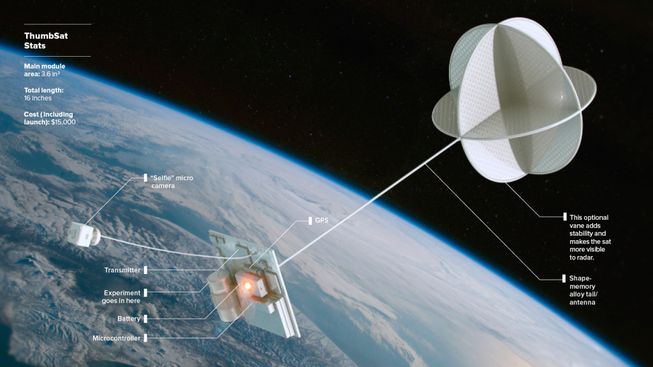
“We get slowed down by old-school ways of thinking,” Whitehead told Wired. “I hope that ThumbSat accelerates progress in space, inspires everyone to look up.”
Whitehead’s “ThumbSats” are basically small, balloon-like structures that can carry a science experiment into space. They are equipped with a microcontroller, a transmitter for communication, a camera, and a GPS unit for tracking. Because they’re small enough to fit into the extra spaces on an existing rocket, they can “hitchhike” on rockets that have already been built and scheduled for launch — making them drastically more affordable to send into orbit.
Once they’re in space, the ThumbSats will collect data, which is then beamed back down to a network of 50 listening stations spread across the globe. The information will be relayed for approximately two months, before the satellites eventually lose altitude and burn up in the atmosphere. Each launch will cost about $20,000, with ThumbSat providing guidance and technical know-how throughout the process.
ThumbSat is preparing its first launch for early next year; a test run that’ll feature 20 different ThumbSat modules from a variety of different groups. The first round of participants include artists like Stefan G. Bucher, who is sending up magnetized fluids and shape-memory alloy; and Chicks in Space: a trio of teenagers who are deploying algae and sea monkey eggs. NASA also is participating in ThumbSat with engineers at the Jet Propulsion Laboratory who are using a cluster of connected ThumbSats to study gravitational waves in space.
ThumbSat already has a network of listening volunteers, which include a Boy Scout troop in Wisconsin and a school in the Coo Islands. All parts of the world will represented to provide the best range of coverage.




